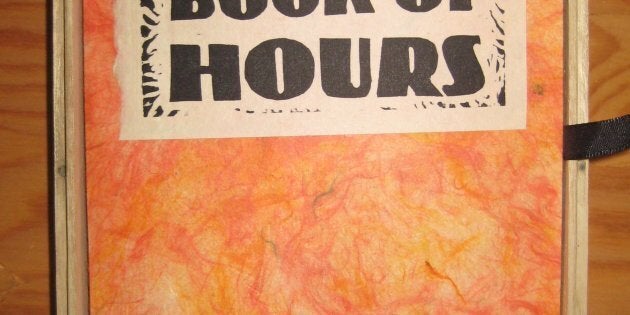
It has been a decade since the world witnessed one of the most impactful acts of terrorism in modern history. The assault on the twin towers of the World Trade Centre in New York shifted cultural paradigms in a way that is plainly irreversible.
As a Canadian who only peripherally experienced the repercussive fear elicited by al Qaeda's actions, I have found myself waking up each morning for the last week ruminating on what I was doing through the hours before those two planes tore a hole in the New York skyline. The fact that Toronto's annual air show recently had jet planes careening vociferously through the air only makes the modus operandi of Osama bin Laden more immediate.
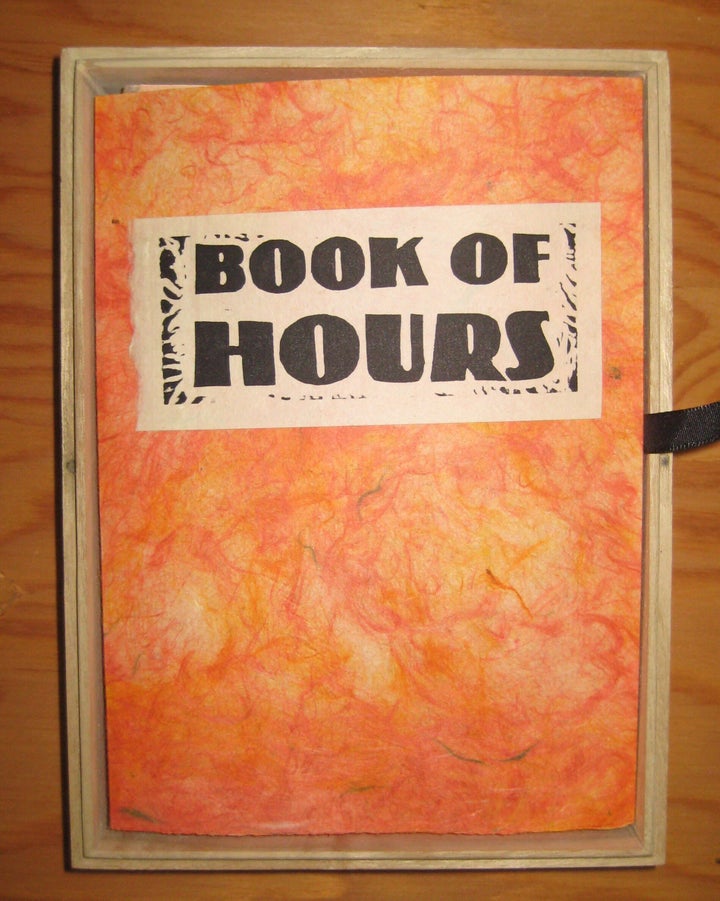
My thoughts were most likely magnified by George Walker's Book of Hours, a wordless narrative brought to life by 99 intricate wood engravings created to honour those who perished in 9/11.
What Walker successfully elucidates by picturing transient moments in the everyday mundane is "the anonymity of the victims and their remoteness from the political arena in which they [played] supporting roles." It is the artist's subtlety -- which resembles restraint -- that so insistently contrasts against other depictions and reports of recent terrorist activity.
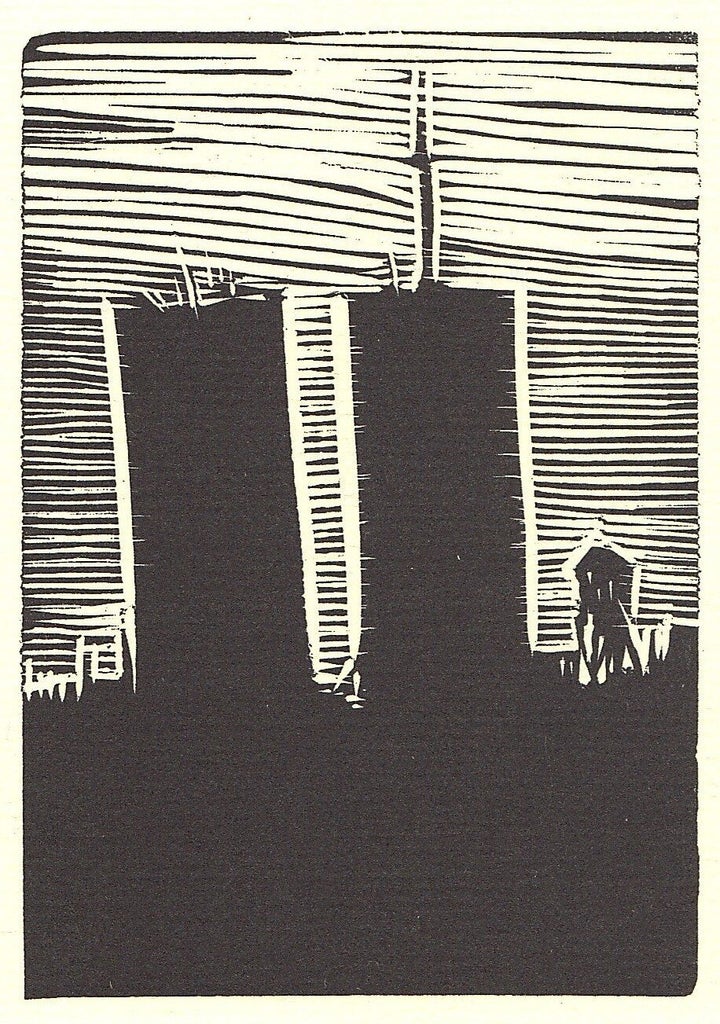
Book of Hours begins with an image of the twin towers, protrusive amongst the mid-rise buildings that surrounded them at ground zero. The towers are clad in black, giving the illusion of two mourning companions. Only the air between and above the buildings is scored with white lines where Walker has removed wood from his printing block matrix. This serene and resolutely still image is followed on the next page by a print of a time stamp, "6:32 AM," that raw hour of the morning when lovers exchange muffled pillow talk and commuters regretfully start their journeys towards work. Here, it represents the dawn of September 10, 2001, when a forecast of the following day's catastrophe would seem incomprehensible to anyone.
Nearly everything seems incomprehensible through the foggy state of interrupted sleep, including the unrelenting backlit numbers staring out from a bedside clock. A sense of urgency and the impact of light on a sensitive retina is recreated by Walker's imposing black box and contrasting white typeface, a formal composition also used by Japanese artist, On Kawara, to striking effect. Walker has summoned the retrospective tension that exists for many after greeting the morning of Sept. 11, 2001 without a specific regard to personal safety, terrorism, or the rupture of simple daily ritual. It was no ordinary morning.
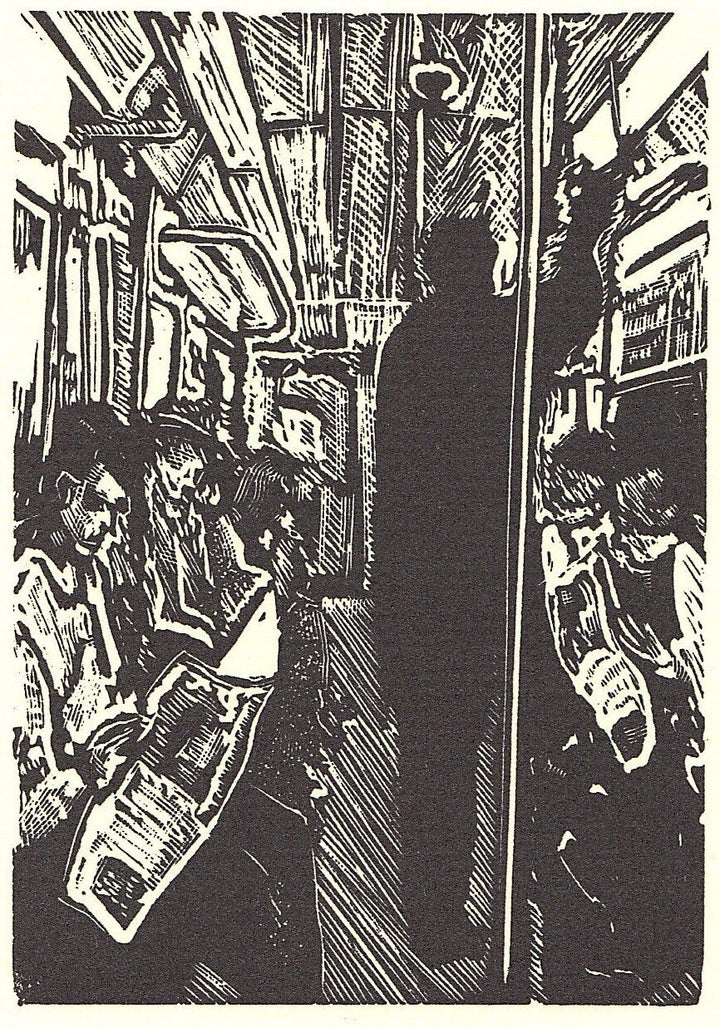
Following the reader's 6:32 a.m. wakeup call, the subsequent pages make visual semiotics of our most immediate daily concerns: sleep, whether alone or with a partner; travel, either by car through highway traffic or via the metro; work, as a blue-collar worker or an office executive; and food, between a diet of black coffee for breakfast or burgers at lunch. Walker's silent narrative deliberately gestures towards a cultural and political time now stolen. The tide of sensationalist news, over-stimulating entertainment, and government duplicity has all but swept us out to sea.
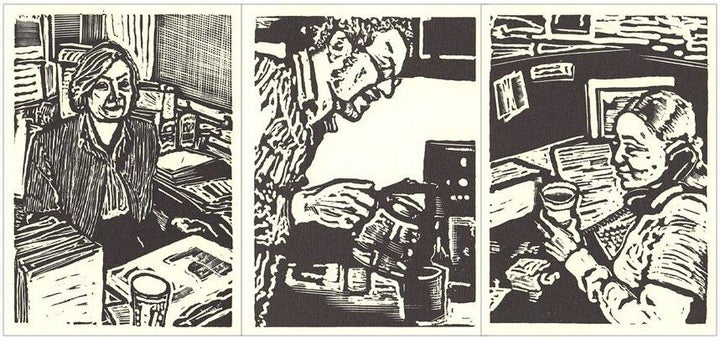
A series of portraits pepper the book and have personalities so well articulated, the late figural artist Lucian Freud could not have hoped for more. The dialogue that occurs between Walker's subjects and the reader is warmly conversational in some instances. In others, the reader feels as though they are the ones being scrutinized. Awareness of a developing surveillance culture has certainly been amplified internationally since the last decade's rash of suicide bombings and catastrophes has taken place. The artist warns us, therefore, that previous beliefs in community, physical and metaphorical borders, personal privacy, news media, and the integrity of governmental systems have been undermined by the backlash of surveillance and deceit. Has the world become so vicious?
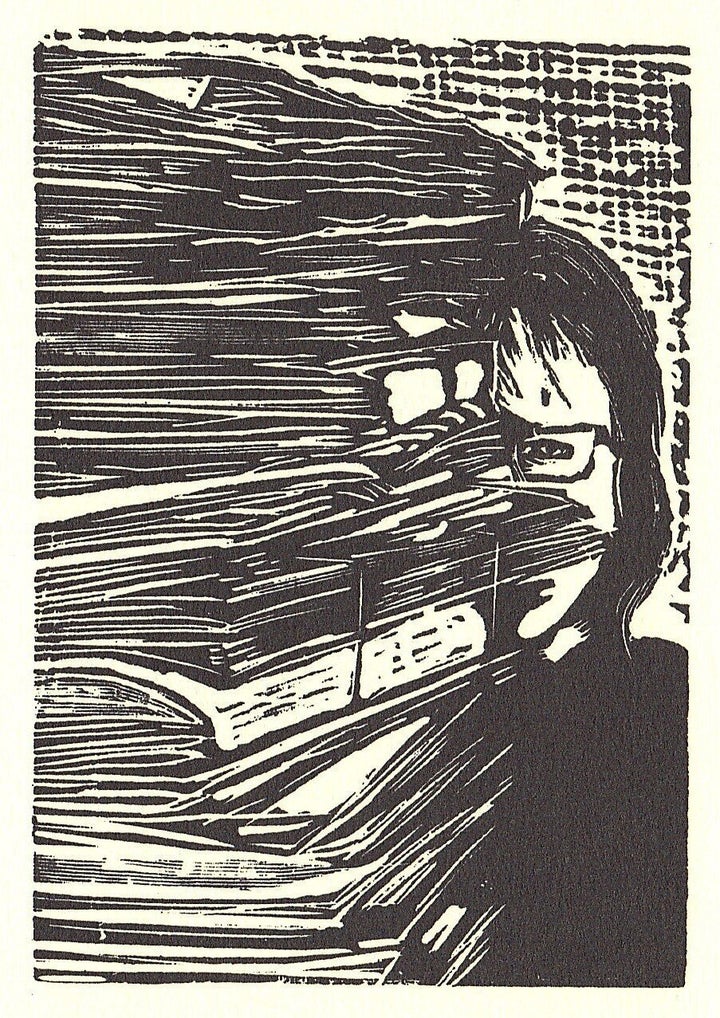
Tempering the devastating implications of the world we now live in are pictured reminders of humanity's sacredness. An image of a man carrying his lover in cradle position redeems hope as they disappear into a doorway fill with the light of Elysium. The intimacy of night as "we grope with our mouths toward the body of another being, when we trust, who takes us in her arms... We are back in a natural world before culture tried to erase our experience of nature. In this world, to touch another is to express love," is also evoked.
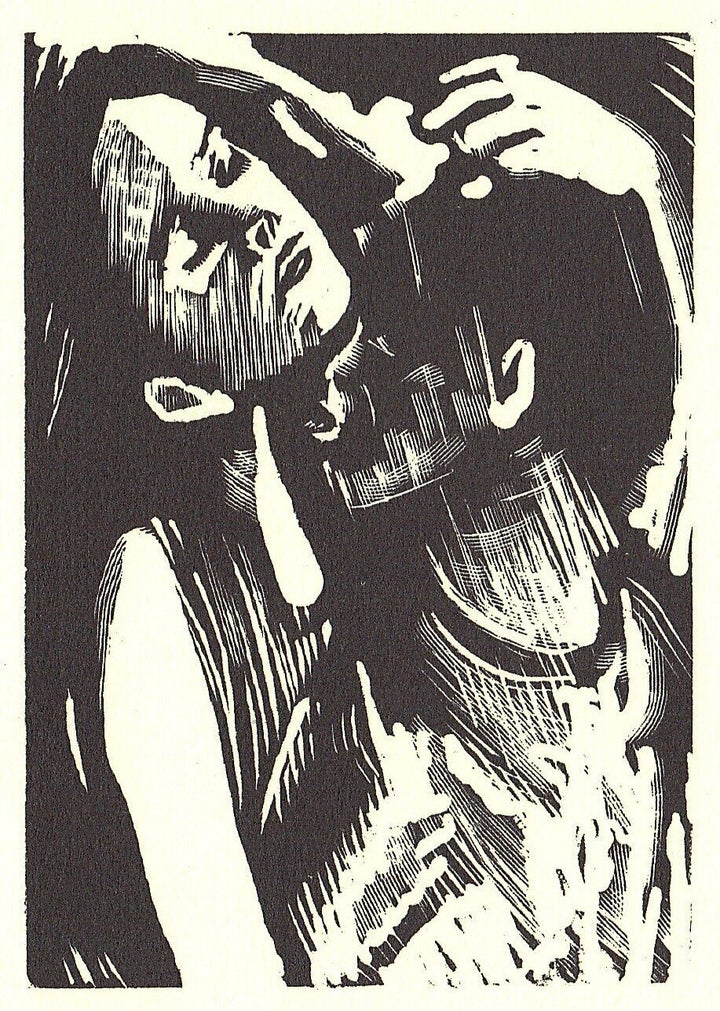
Departing from this sweetness in the belly is the descending doom of Sept. 11 -- personified by a two-page spread featuring a repeated time stamp reading 6:32 a.m. on the left hand page and man cast in sinister shadow on the right.
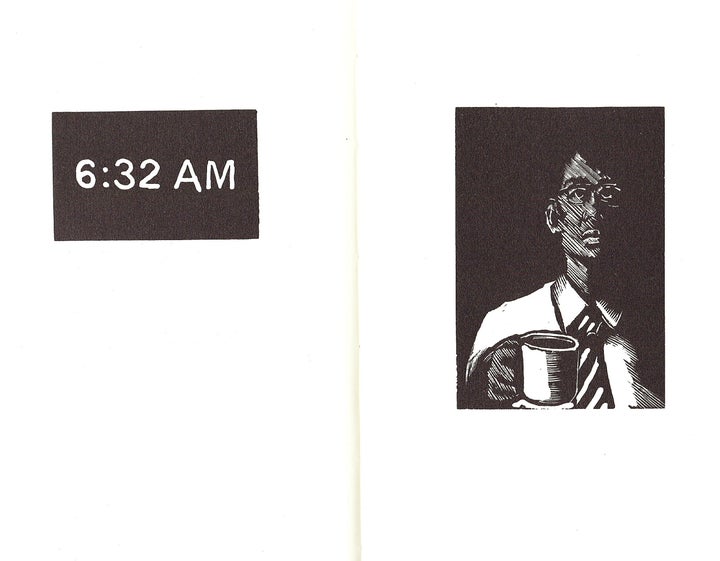
Book of Hours captures a now well-known but still tragic moment, concluding with the arrival of the second hijacked plane at 9:02 a.m. Though readers may be left with a dose of reality that smarts, the overarching energy radiating from the book allies it to the wonderful sacred objects for which it was named. In the Middle Ages, a book of hours was a devotional illuminated manuscript that was referenced on a daily basis for prayers, psalms, and lessons of God's work during the passage of time. The meditations of these calendar-based, ornately decorated books inform our reading of Walker's tour through the 24 hours prior to Sept. 11, 2001. The cultural and social habits enunciated herein form our book of hours -- one not written down but guided by our consumption of popular culture, our 9 to 5 work schedules, and our pursuit of "salvation" in the form of the (North) American dream.
George Walker teaches Book Arts at the Ontario College of Art and Design University and is currently exhibiting his work in the group show, "The Art of the Woodcut Novel", at the AVA Gallery and Art Center in Lebanon, New Hampshire. The exhibition runs from Sept. 9 through Oct. 7, 2011.
www.avagallery.org
A sincere thank you to George for his insightful dialogue and to Michelle, his wife and studio manager, for helping me realise this essay. Kind Regards to Mr. Inkster at Porcupine's Quill for the use of images.